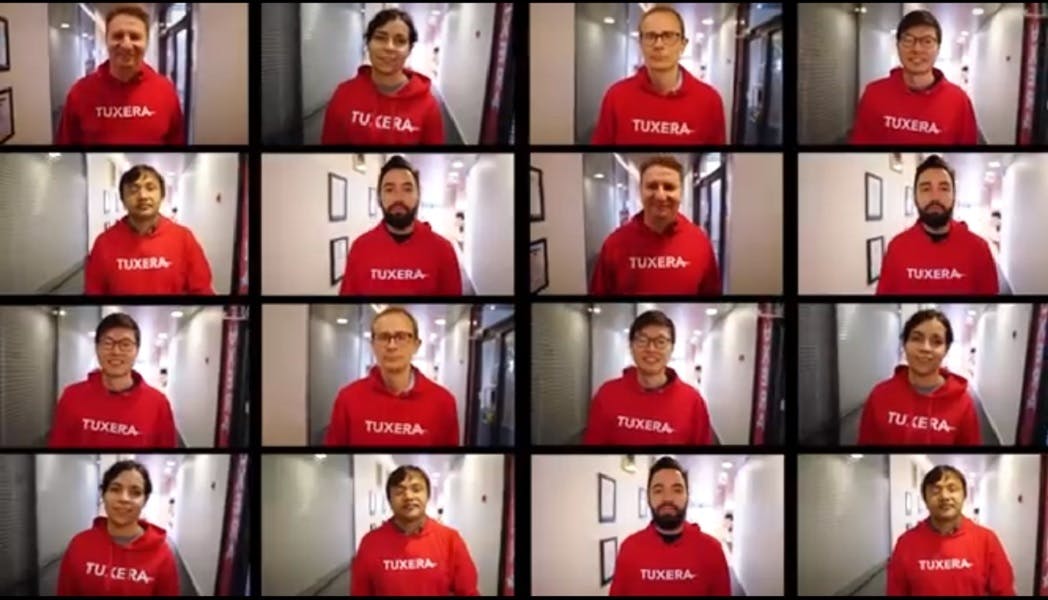Traditionally, when companies set out to create or refresh their values, the process is top-down. Management or the HR team typically defines the values, while the employees are supposed to buy in and adhere to them. Best-selling business author Patrick Lencioni supports a traditional top-down method: “…values initiatives have nothing to do with building consensus — they’re about imposing a set of fundamental, strategically sound beliefs on a broad group of people.”
At worst case, management hires a consultant (a typically very expensive one at that) to create neatly defined value statements. Then the values are “cascaded” (or communicated, in regular-people speak) down to the employees through a nicely written email from the company management. Some inspirational posters emblazoned with the new values get tacked to the walls and the job is done.
But do employees truly buy in to values this way? Based on my experience, the answer is no. Value statements don’t serve their purpose if people don’t believe in them – if they’re not used in daily work and decision making. In other words, they’re meaningless and empty.
Going back to Mr. Lencioni, one thing I can agree with is this, “Empty values statements create cynical and dispirited employees, alienate customers, and undermine managerial credibility.”
We Went to Our People First
At Tuxera – an embedded software development company based in Finland – we place a lot of trust in our employees and give them freedom to do their work in the best way possible. Inclusion and offering people a genuine opportunity to make an impact are very important to us, no matter what we do. That’s why we put our people first when we were considering refreshing our values. Instead of driving the process from top-down, our People Operations team asked our employees what values guide their daily work to refresh the company values. Our consensus-driven approach went like this:
1. Survey and collect feedback on the old values — We first conducted an anonymous survey which gave everyone the chance to comment and give feedback on the values we already had. This allowed us to determine if people still felt aligned with those values. The results showed that while some of the basic ideas were palatable, the values needed many improvements.
2. Team-by-team workshops to review and discuss results — Once we identified the need for improvements, we conducted workshops with each team. First, we shared the results of the survey, then everyone had an opportunity to discuss their take on things, exchange ideas, and contribute to the process in an informal and relaxed setting.
3. Individual sessions as needed — For those that felt they had additional feedback to share or could not attend the team workshops, we met one-on-one with them.
4. Workshops with management — The management group had equal opportunity to give feedback through the survey and workshops just as everyone else did.
5. Craft the story from within — Our People Operations team worked together with Tuxera’s own content professional to find the right words to summarize and describe the results of these discussions. This stage also included benchmarking value statements styles from other technology companies before settling on how to tell what makes Tuxera tick from the viewpoint of our employees.
6. Checkup with company founders — Once the value statements and supporting copy were written, we presented the outcome to the company founders. Basically, this was to check that the process captured the essence of what the founders felt the company stands for. What we found was that nearly everything was in sync with their ideals, with only minor quibbles over some words or phrases.
7. Present the values — The value statements were presented to all employees in a regular office meeting. The first and foremost thing that was presented was that the values were their story, defined by all Tuxerians. As a final touch, the value statements were also printed in a simple visual booklet for people to refer to when desired.
8. Follow-up and measurement — In our case, we have already received some ad-hoc feedback about the new values statements, such as an anonymous comment left in the feedback box, which read, “I like our new values.” Also, employees have commented in informal discussions around the kitchen that they like our values.
But as the company and business evolves, values should too. That’s why the process also includes regular, formal follow-up. Our aim is to run a checkup on a regular basis to see if the values still fit what our people think and practice.
Your First Step to Consensus Values
Obviously, if any other company were to follow this model, they would need someone to drive the process, otherwise it would never go forward. Whoever takes the lead needs good project management, facilitation, and listening skills, as well as the ability to build a cohesive overview shared by the whole company.
Final Thoughts
There are, of course, many ways to approach the values-defining process, and in this article I wanted to share the one that worked best for our company. I feel this was a particularly bold approach, as it showed the amount of trust our leaders place in our employees. This approach requires management to let go and give employees the mandate to define such an important part of the company strategy.
One of the beauties of this consensus-building approach is that it also makes “cascading” – communicating goals downwards through the organization – obsolete. Because the whole process is from the people to the people, there’s nothing to be cascaded. Everyone had a chance to make an impact and with the level of contribution they felt best.
I hope our example can also serve as one benchmark for other HR leaders when they are thinking about defining or updating values at their companies.
